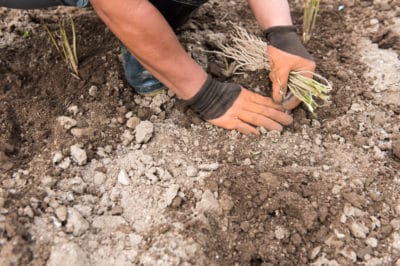When to Plant Asparagus Crowns and Seeds
Asparagus can be started from seed or grown from one or two year old root stock called a crown. The crown consists of a central growth bud and a mass of pencil-sized roots sprouting out in all directions from the center.
In most areas, asparagus crowns are planted in March and April into a trench in a well-prepared garden bed at 6 to 8 inches (15 to 20cm) deep and 12 to 18 inches (30 to 45cm) apart in rows spaced 4 feet (1.2 meters) apart.
Sow asparagus seeds in potting mix soil ½ inch (1.3cm) deep and 1 inch (2.5cm) apart in trays in the greenhouse. Keep seeds moist at all times and allow three to four weeks for germination. Tend the seedlings in the greenhouse for at least 12 weeks before transplanting, or allow the seedlings develop a root system in the greenhouse, and plant them the following spring.
Tending Asparagus after Planting
After seedlings or crowns are in the ground, keep the soil watered so that it stays moist but not soggy, giving the roots plenty of moisture to grow and become established. Once the plants become established and start producing shoots for harvest, watering in the spring can be minimal, and the primary time for watering is in the summer when the ferns are grown and producing flowers.
At this time, the mature asparagus plant is using energy from the sun through its leaves, building up a storehouse of nutrients in the roots for the next year’s crop of shoots, making the summer months crucial for giving the plants adequate water.
Besides watering, asparagus plants benefit from:
- An annual dose of fertilizer applied after the final harvest in June each year.
- Cutting back of the dead ferns in late winter, allowing them to remain in place for several months after they turn brown, so they can return nutrients from the stalks back into the roots.
- Mulching the bed with compost or leaves to cut back weeds and to add organic matter to the soil.
- Cutting weeds when they are small and being careful not to disturb the asparagus roots when weeding.
- No harvesting of stalks for two years after planting crowns and three years after planting seedlings. In the third year, harvest shoots only for a few weeks. After that, harvest until the end of June.
Asparagus plants require some patient waiting after planting, but they reward you for years once the wait is over.
